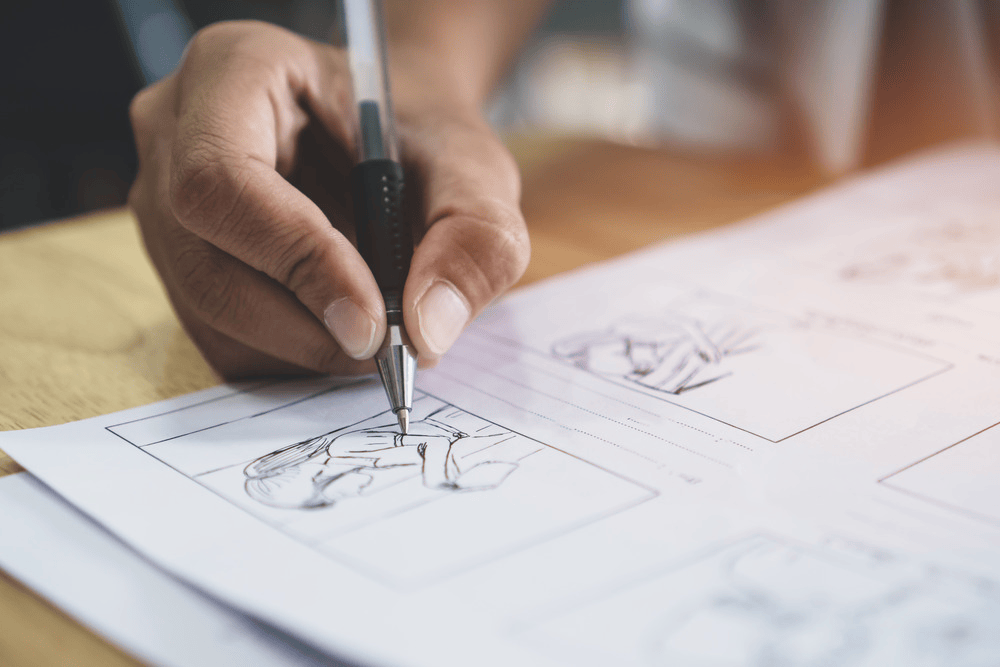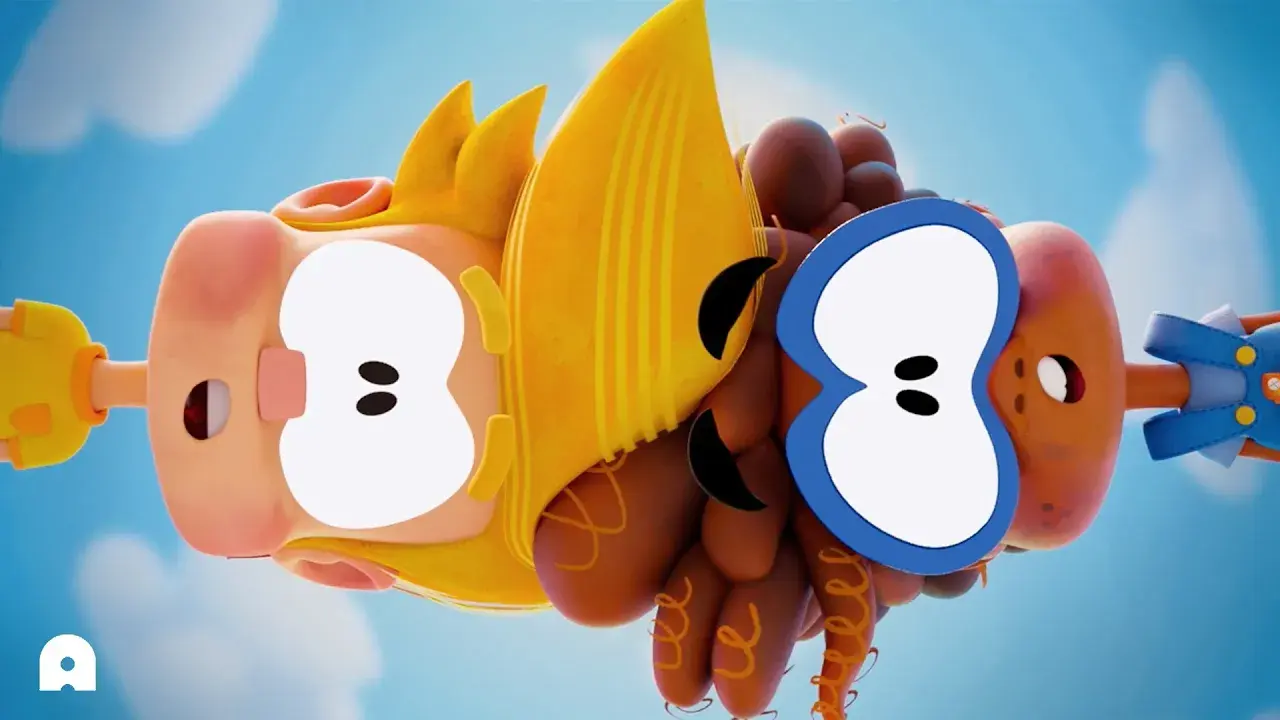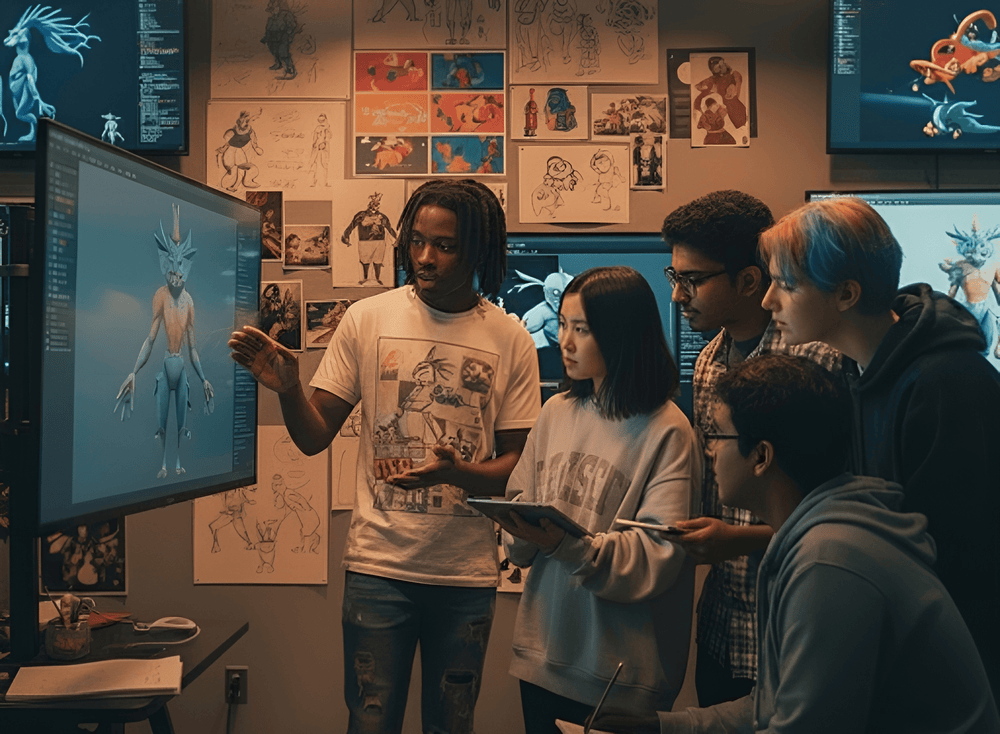Animation is a dynamic, collaborative field that brings together art, storytelling, and technology. Whether it’s for a feature film, TV series, game, or marketing campaign, animation projects are typically produced through a structured process known as the animation pipeline.
This pipeline is typically broken into four main stages: production management, pre-production, production, and post-production, with each stage involving specific departments and roles.
While the structure of the animation pipeline tends to be fairly consistent, it can vary depending on factors like the type of animation (2D vs 3D), animation style or aesthetic, studio size, or production budget.
For instance, a large studio producing a 3D animated feature film for Netflix may involve dozens of specialists, while a small team creating 2D animations for YouTube might see a few individuals wearing many hats.
If you're considering a career in animation, understanding the pipeline will help you identify where your interests, strengths, and creative skills fit best. It can also help you decide which specialisation to focus on if you study animation.
Keep reading to learn more about some of the key types of animation jobs involved in the animated film and television production pipeline.
1. Production Management
Production management isn’t so much a stage of the pipeline as it is the team that keeps the entire pipeline moving smoothly.
They oversee the animation project from start to finish, co-ordinate between various departments, make sure everything stays on schedule—and within budget—and problem-solve daily challenges.
Animation jobs in production management include:
- Director / Animation Director: Leads the creative vision of the project. The director works closely with department leads to guide the storytelling, pacing, and visual style. In addition to a film director, larger productions often also have a director of animation who specifically oversees performance and movement in animated scenes.
- Producer: Handles the logistical and financial side of the production. They manage resources, production schedules, and budgets, and liaise between clients, production management teams, and the creative team.
- Production Manager: Oversees timelines, staffing needs, and department budgets, typically reporting directly to the producer. They co-ordinate with the director and department heads, manage production teams, and act as a key liaison with the producer.
- Production Assistant / Production Runner: Entry-level support role involving administrative tasks and on-the-ground help. They mainly work with the production co-ordinator and support the broader production management team. This role is a great way for those starting out in the industry to gain experience.
2. Pre-production
Pre-production is the part of the pipeline where the planning takes place. It’s where the story is written, visualised, and designed. This is where the creative foundation of a project is built, from initial concepts to storyboards and character design.
Pre-production roles in animation include:
- Animation Scriptwriter: Develops the screenplay, dialogue, and story arc. They create the narrative blueprint that the rest of the team brings to life. Writers work closely with the director and producers to align the script with the director's visual and thematic vision, while working within budget restraints.
- Art Director: Establishes and oversees the overall look and feel of the production, ensuring consistency across designs, palettes, and compositions. They manage the art department's workflow, overseeing the creation of visual guides like mood boards and storyboards. They collaborate closely with the director, producer, and various other artists to ensure a cohesive visual outcome that meets budget and schedule requirements.
- Concept Artist: Creates early visual explorations of characters, props, environments, and key moments to guide the project’s visual tone. They provide detailed artwork and presentations to guide the subsequent stages of production. They work closely with the director, producer, art director, and art departments to develop a consistent visual style.
- Character Designer / Character Artist: Designs the characters’ appearance, working from the script, concept art, and director’s input, to develop a character's look and feel, including their costume, personality, expressions, poses, and gestures. They collaborate with directors, writers, and other artists, creating detailed model sheets that guide animators and 3D modellers in bringing the characters to life
- Environment Artist / Background Artist: Designs and illustrates the story’s visual settings and locations, establishing the colour palette, mood, and visual style of the world where the story takes place. They work closely with directors, storyboard artists, and other members of the art department.
- Storyboard Artist / Storyboarder: Translates the script into visual format, drawing a sequence of panels that represent each shot of the film to serve as a visual guide for subsequent production stages. They work closely with the director(s) and story department to effectively interpret the script and communicate the director’s vision.
- Layout Artist: Defines the virtual camera's position, angle, and path, ‘blocking’ each scene’s characters and props to establish each shot's composition, depth, and movement. They collaborate closely with the director and storyboard artists, translating the story into a polished, framed visual sequence.
- Voice Artist / Voice Actor: Performs voices for various characters, providing dialogue, narration, and sound effects recorded in a studio setting, usually in the pre-production stage. They work closely with directors and sound engineers to capture the ‘prelay’, which dictates the animation’s timing and allows animators to precisely sync the character’s movements to the performance.
- Editor: Shapes the story's pacing, rhythm, and visual flow from start to finish, creating a preliminary ‘animatic’ or ‘story reel’ with rough visuals, sound, and dialogue in pre-production, before the animation work begins. In post-production, they edit and reorder shots into smooth sequences to create a coherent and compelling narrative.
3. Production
In the production phase, digital assets are created and animated. This is often the longest phase of the animation pipeline and involves a wide range of technical and artistic skills.
Production roles in 3D animation include:
- 3D Modeller / Model Maker: Builds three-dimensional models of characters, props, and environments using 3D software, turning concept art and model sheets into detailed three-dimensional assets. They work closely with art directors, designers, and other 3D artists to ensure their models meet the project’s artistic and technical requirements.
- Rigging Artist / Animation Rigger: Builds internal digital ‘bones’ for 3D models, turning them into manipulable ‘puppets’ so animators can make them move naturally. They work closely with character modellers and animators to translate anatomical principles into digital frameworks or ‘rigs’.
- Texture Artist: Creates and applies surface textures (like dirt, wrinkles, or fur) to 3D models to make characters, objects, and environments look believable. They work with modellers to receive 3D assets to texture, lighting artists to ensure surfaces interact with light correctly, and directors and creative teams to match the project's visual style.
- Technical Director (TD): Develops and maintains tools, software scripts, and workflows to help the team solve technical challenges, automate repetitive tasks, and keep the pipeline moving. TDs work closely with animators, modellers, and other specialists, often developing custom software and ensuring the efficient use of technology for tasks like character rigging and effects simulation.
- Lighting Designer / Lighting Artist: Establishes a scene's mood and atmosphere by digitally positioning virtual light sources, adjusting their brightness, direction, and colour to create the mood, visual interest, support the composition and create visual depth. They translate the creative team's vision into a rendered image, collaborating closely with directors, designers, animators, compositors, and art department supervisors to maintain visual continuity.
- Animator / 3D Animator: Makes digital characters and objects move by manipulating a 3D model's rig to make it ‘perform’, using keyframing to define movements. Much like actors, animators use postures, gestures and expressions to capture emotional nuance and bring characters to life. Guided by the storyboard, audio prelay, and director feedback, animators collaborate with various departments, including modellers, riggers, and effects artists.
- Effects Artist / VFX Artist: Uses specialised software to create dynamic visual effects (VFX) like fire, water, smoke, explosions, or magic, integrating them seamlessly into the film's existing scenes to enhance the story and mood. They typically work closely with directors, VFX supervisors, and technical directors, as well as designers, modellers, and animators.
4. Post-Production
Once all scenes are animated and rendered, post-production brings everything together—including editing, sound, and compositing—to ensure the final product is polished and cohesive.
Animation post-production roles include:
- Compositor: Assembles all the various digital elements (3D character and environment renders, effects, etc.) into the final shots. They perform colour correction, adjust the lighting, enhance the overall image and ensure visual consistency. They mainly work with the animation and effects teams as well as the director.
- Sound Designer / Sound Editor: Adds audio effects, dialogue, and music that give life and atmosphere to the animation. They collaborate closely with the director to ensure the audio complements the story and adds to the film’s overall immersive experience.
- Editor: Shapes the story's pacing, rhythm, and visual flow from start to finish, creating a preliminary ‘animatic’ or ‘story reel’ with rough visuals, sound, and dialogue in pre-production, before the animation work begins. In post-production, they edit and reorder shots into smooth sequences to create a coherent and compelling narrative.
Launching Your Career in Animation
The animation industry offers diverse career paths, from artistic roles like character design and animating, to technical positions in rigging, lighting, and compositing. If you dream of working on an animated series or a blockbuster feature film, there’s a place for every skill set in the animation pipeline.
Many successful professionals begin with formal training. At The Animation School, we offer a Diploma in Digital Animation that equips students with the technical, creative, and professional skills needed to break into the industry.
Our range of online short courses also makes it easy to test the water or upskill in specialisation areas like 2D animation, stop motion, motion graphics design, and more.
Want to learn more? Join us at our next Open Day to get answers to your questions about studying animation, view student work, and speak with lecturers. Our lecturers have first-hand animation industry experience and would be happy to answer your questions about working in animation.
Further Reading
For more inspiration, read our blog on animation companies in South Africa to see where a career in animation might take you. Or, if you’re interested in making video games, check out our blog about building a career as a video game designer.




